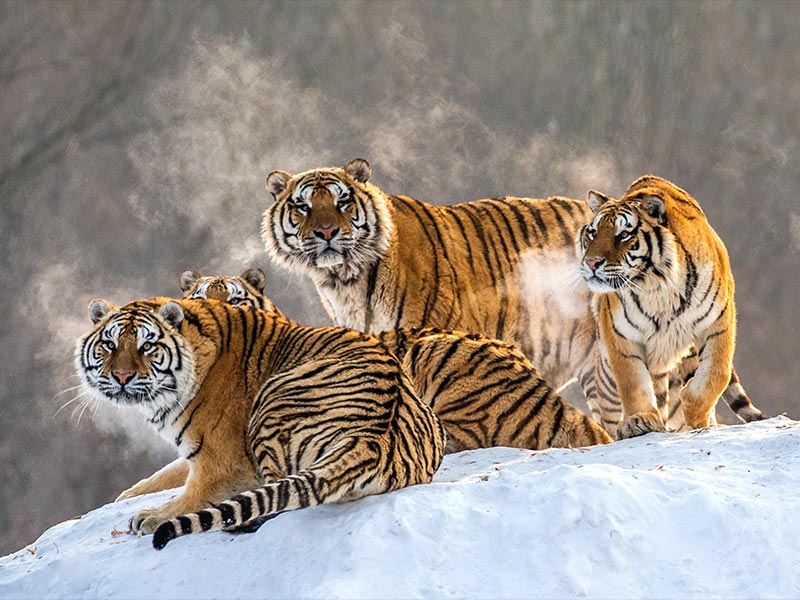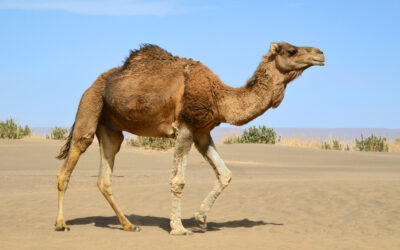Though it might seem strange that tigers—one of the most iconic predators—have bright orange fur, this color actually serves as effective camouflage in their natural habitats. The secret lies in the vision of their prey.
Many animals that tigers hunt, like deer, have dichromatic vision, meaning they perceive the world primarily in shades of blue and green. To them, the orange fur of a tiger doesn’t appear as bright and bold as it does to us humans. Instead, it looks more like muted green or gray, helping tigers blend in with the forests and grasslands where they live. This clever adaptation allows tigers to stalk their prey unnoticed until the last moment.
In addition to color, tigers’ black vertical stripes play a crucial role in their camouflage. The stripes help break up the tiger’s outline, making it harder for prey to detect their approach, especially in areas with tall grasses or dappled sunlight filtering through the trees.
The stripe pattern on a tiger is unique to each individual, much like fingerprints in humans. These stripes not only help with camouflage but also serve as an identifier among tigers themselves. Interestingly, the stripes aren’t just on the fur—they extend down to the skin, so even if a tiger were shaved, its stripes would still be visible!
This combination of seemingly bright orange fur and black stripes works together to help tigers stay hidden and stealthy, despite their size and powerful presence. So, while tigers might stand out to humans, in the eyes of their prey, they are masters of disguise, perfectly suited to their environments! Their impressive camouflage is just one more reason tigers remain such successful predators in the wild.
Related Articles
The Origins of April Fools’ Day—A Celebration of Tricks and Pranks
The origins of April Fools’ Day are uncertain, but one theory links it to 1582, when France switched from the Julian calendar to the Gregorian calendar. People who didn’t get the memo and continued...
The History of Camels—Nature’s Ultimate Desert Survivors
Camels have been desert dwellers for millions of years, but their adaptations make them one of the most resilient animals on Earth. Contrary to popular belief, camels don’t store water in their...
The Science of Tides—The Moon’s Pull on Earth
Tides are the rise and fall of ocean water, caused mainly by the gravitational pull of the moon. As the Earth rotates, the moon’s gravity pulls on the oceans, creating bulges of water that result in...





